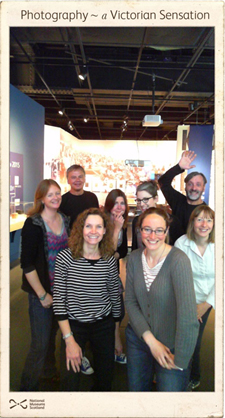We had over 20,330 photographic objects to choose from when we began thinking about how to create the exhibition Photography: A Victorian Sensation.
National Museums Scotland already owned a sizeable collection of photographic material. This included important pieces associated with William Henry Fox Talbot, inventor of the calotype process, donated by his grand-daughter Matilda in 1936; prints by renowned Edinburgh photographers Hill and Adamson; and a variety of studio equipment and ephemera.

Then in 2003 our photographic collections were dramatically increased when we received over 18,000 objects from photographic collector Bernard Howarth-Loomes. Over a decade these were all painstakingly catalogued and photographed by staff and dedicated volunteers. This prompted the original idea for an exhibition on the history of photography, which changed and evolved over a number of years, until final object selection began in early 2013.
So as the exhibition draws to a close, I thought it was time to share a few of the numbers and some details of the enormous volume of work that went into selecting, conserving, photographing and displaying the objects that make up the exhibition.
12,856 Stereocards
By far the largest collection of objects to choose from was the stereocards, of which Bernard Howarth-Loomes, like celebrity collector Brian May, was a prodigious collector. Bernard had already sorted them into categories by subject and geographical location. We started by laying them out individually on long tables, like dealing never-ending packs of cards! A long list was chosen and then a short list when we knew the sizes of the frames they would be displayed in. You can see 396 of these online.
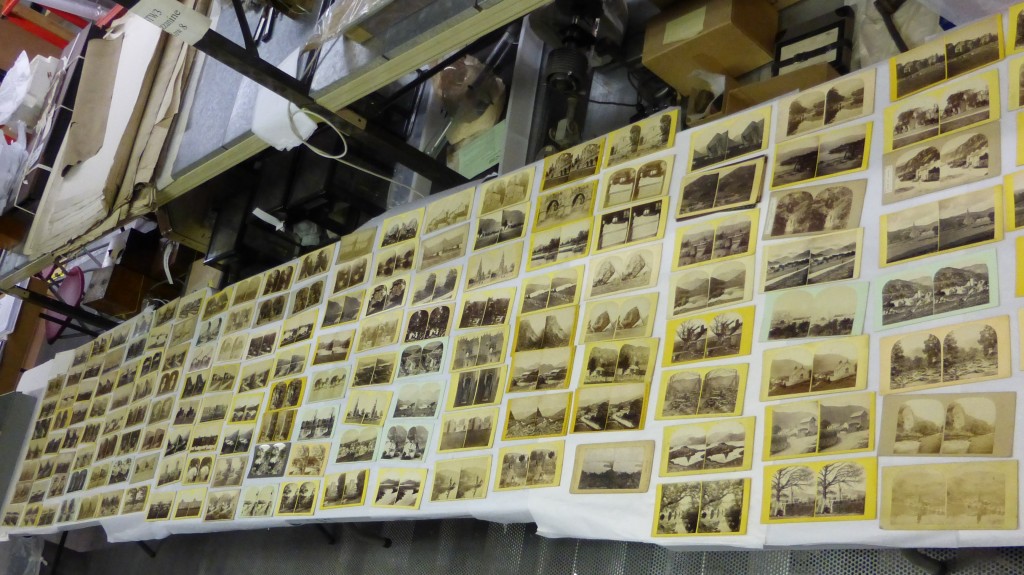
2,673 Carte-de-visites
The second biggest collection was the carte-de-visites, filling four lever arch files, again all of which needed examining individually, long-listing, short-listing, and photographing front and back, and there are now 471 of these to browse online. During the Victorian period these were highly fashionable to collect and exchange, and we also have an array of albums made from different materials. There are lots of famous faces captured on these cards, some of whom you might recognise.

351 Daguerreotypes
There were 351 daguerreotypes in our collection. The unique image is created by mercury vapour on silver, and can show either a positive or negative image depending on the angle at which it is viewed, or the viewer’s reflection, or just blank glass! We spent some time testing the best angle and lighting to display them at, within a viewing band accessible to visitors of various heights. Our most successful mass display has the daguerreotypes displayed at 60 degrees, with soft top lighting, and a plain dark background behind the viewer to minimise reflection. There are 125 daguerreotypes available online here.

Another issue with many of the daguerreotypes was glass disease, as salts leach out of the glass and crystalise on the underside, potentially damaging the highly fragile daguerreotype image underneath. Following training from an expert external conservator, our conservation team then painstakingly took apart all of the daguerreotypes and ambrotypes to clean the glass, as recorded by Rosalind and Emmanuelle in their blog.


191 Ambrotypes
Ambrotypes are wet collodion negatives from which multiple prints can be reproduced from. However as people really liked the format of the daguerreotype mounted in a small velvet-lined case, they put a black backing behind the glass negative to produce a single positive image. 101 ambrotypes can be seen here.
Calotypes and wet collodion prints
Calotype and wet collodion prints are the most light-sensitive objects in the exhibition, particularly the early experimental works of Talbot, Hill and Adamson. Different concentrations of chemicals, particularly the fixative, means the prints could potentially carry on developing until the whole page goes brown; this would be an irreversible disaster!

National Galleries Scotland undertook micro-fade testing on our objects to see how long we could safely display the images. A tiny area (about 0.3-0.4mm) is faded using a powerful light source, and represented on a graph showing the breakdown of the different pigments. This then allows us to calculate how long object can safely be exposed to light over a 500 or 1,000 year ‘life span’, such as 5 months of 8 hour days, every 5 years, or 2.5 months of 8 hour days every decade. Some prints were less light sensitive than expected and could stay out for the full exhibition, while others had to be swapped halfway through, and a couple had to be removed completely.

We also tested all case materials and paints to make sure they wouldn’t give off solvents or other chemicals which would tarnish or degrade the objects, particularly those containing silver. We mocked up a case with both real and replica objects, to test a variety of LED lights of different shapes, formats, intensities and ‘warmth’. We wanted all objects to be lit evenly across the case, without hot spots, glare, or shadows from the cases.
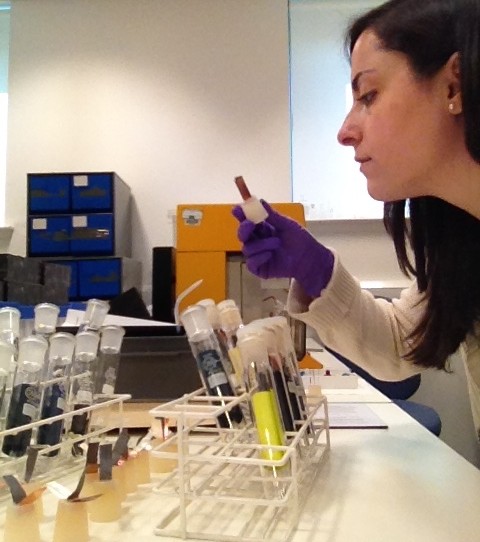
110 Mounts
The object selection process also included mocking up cases, to make final decisions on display.

The chosen objects were then handed over to our paper and artefact conservators to be assessed for damage, cleaning, and mounting for display.
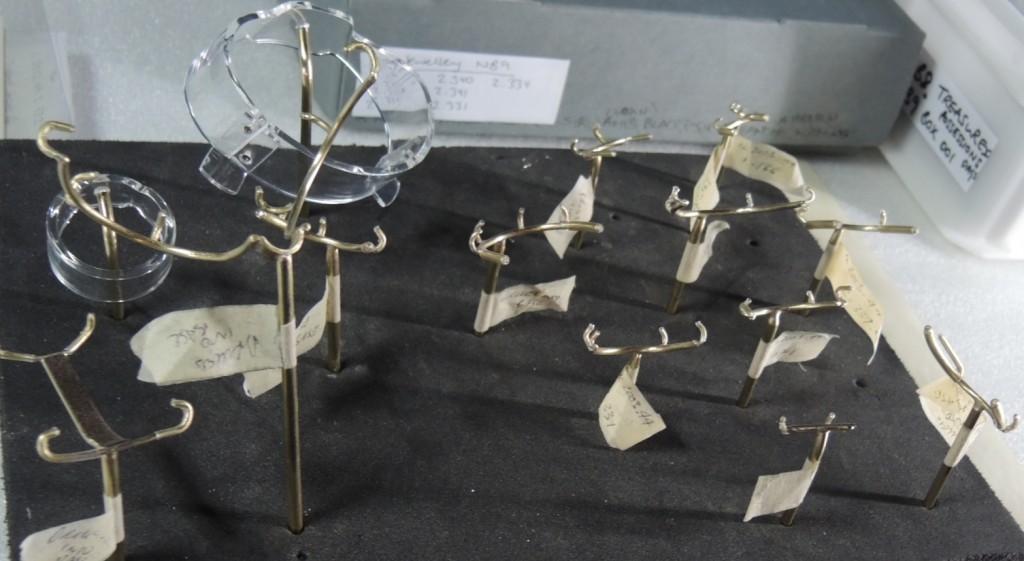
Three-dimensional objects have different display needs, and so 110 unique mounts were purpose-made to support the fragile objects, including the memento jewellery with human hair! Additionally about 1,500 individual plastic pegs were needed to hold up the daguerreotype and ambrotype mass displays.
Over 2,500 digital photographs
After conservation, every object in the exhibition had to be professionally photographed by our in-house photographers, often from different angles, and the front and back of prints. Keeping track of which objects were in which studio in which building, in the right order, with none left behind, and transporting them between with the changeable Scottish weather, was at times quite challenging!
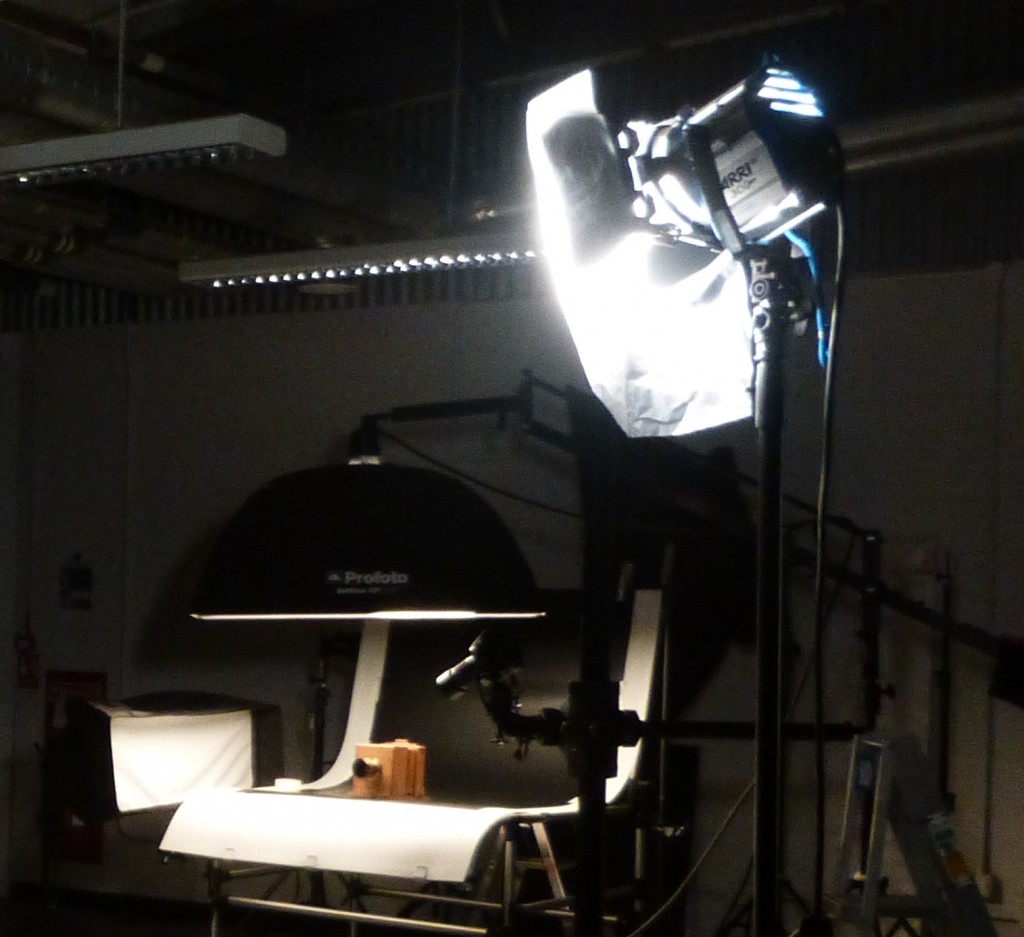
1,467 Items packed
Packing the objects in the right order for installation took a little while too. They were carefully placed in trays, boxes, crates and blankets at our collections storage unit and taken up to the National Museum of Scotland.

3.5 weeks to install
The main object installation took 3.5 weeks, with each object carefully mounted and arranged, with appropriate lighting. As you can see from the figures above, the exhibition is only a fraction, about 7%, of our total holdings of historic photographic material! Much more information and extensive research is available in the two exhibition catalogues, available from here and here.

It has been an amazing experience working with such fragile but evocative artefacts, and also the brilliant project team, but sadly it’s now almost time to do it all in reverse, and put the all the objects safely back into storage. So after all that work, I hope you manage to visit the Photography: A Victorian Sensation exhibition before it closes on the 22 November 2015.
